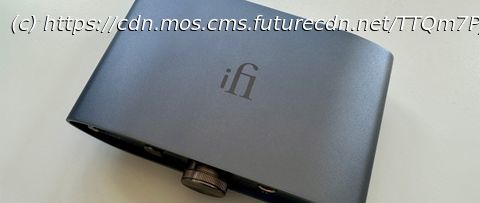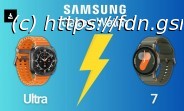Three is a magic number – or, at least, iFi hopes it is…
iFi Zen DAC 3 review: Two-minute review
The iFi Zen DAC 3’s arrival comes with high expectations. iFi had hit it out of the park with the original Zen DAC, and hit it further still with the next model’s replacement, which means the pressure of expectation on this Zen DAC 3 is significant.
Visually, it’s an evolution rather than a revolution – and that’s the case where specification is concerned too (although the switch from USB-B to USB-C is very welcome indeed). At a glance, the biggest change of all is in the asking price – this latest model breaks the $200 / £200 / AU$200 barrier, and not by pennies.
It turns out to be well worth it, though. Whether it’s used to power a desktop system or as a way of introducing your laptop or smartphone to your full-on audio system as a credible component, the Zen DAC 3 does sterling work. It’s a musical, informative and entertaining listen, a device that is able to analyse a recording fully but not at the expense of engagement.
All of which means it’s without meaningful competition among the best portable DACs where the price/performance/functionality ratio is concerned. Which in turn means I am very excited indeed by what Zen DAC 4 might be like… iFi Zen DAC 3 review: Price and release date
Became available to buy on April 16, 2024
Priced at $229 / £229 / AU$229
The iFi Zen DAC 3 is on sale now, and in America it goes for $229. In the United Kingdom, it’s priced at £229, while in Australia it’s AU$229. So for once, Antipodean customers aren’t getting an overtly rough deal – quite the opposite, in fact.
This represents a fairly chunky price rise over the outgoing Zen DAC 2 and original iFi Zen Dac, it’s worth noting. If the increase in performance over its predecessor is similar to the increase in price, though, it will be well worth it…iFi Zen DAC 3 review: Features
PCM 32bit/768kHz, DSD512 and MQA decoding
Fixed and variable output gain
Balanced and unbalanced outputs
First things first: powering the iFi Zen DAC 3 can be done a couple of ways. The rear panel features a USB-C socket for data transfer – but this can also be used to power the iFi at the same time, which simplifies cable management no end. Of course, there’s also a 5V power socket for connection to mains power – powered this way, the USB-C is free to handle just data and a cleaner signal path is the result.
Incoming data is processed by a 16-core XMOS microcontroller before it’s delivered to a Burr Brown four-channel ‘True Native’ DAC chipset that’s capable of dealing with 32bit/768kHz PCM files, DSD512 and double-speed DXD. ‘True Native’ refers to the chipset’s separate PCM and DSD pathways, meaning both file types stay bit-perfect in their native form right until the moment of conversion to analogue.
The Zen DAC 3 is an MQA decoder too, so Audirvana, Roon and Tidal users can have the full ‘three unfold’ decoding process take place on board rather than have their source player perform the first couple of unfolds.
Getting the converted audio information out again can be done in a few different ways. If you’re using the Zen DAC 3 with headphones, you’ve a choice of 6.3mm unbalanced or 4.4mm balanced outputs – both sockets are on the fascia. If you’re sending the analogue signal to an external amplifier, powered speaker of what-have-you, there are unbalanced stereo RCA outputs and a balanced 4.4mm output on the rear fascia. If you’re using one of these last two outputs methods, you’ll also need to use the ‘variable/fixed’ switch that sit between them – ‘variable’ allows the iFi to function as a pre-amplifier, with volume control retained, while ‘fixed’ means the iFi becomes just another line-level source.
The analogue signal can be subject to a couple of processing options before it leaves the Zen DAC 3, too. ‘Power Match’ occurs at the amplification stage, and is a gain boost for more demanding headphones. ‘XBass+’, meanwhile, is designed to ‘enhance bass without compromising the clarity of the midrange’ – readers of a certain age will recognise a ‘loudness’ button when they see one.






